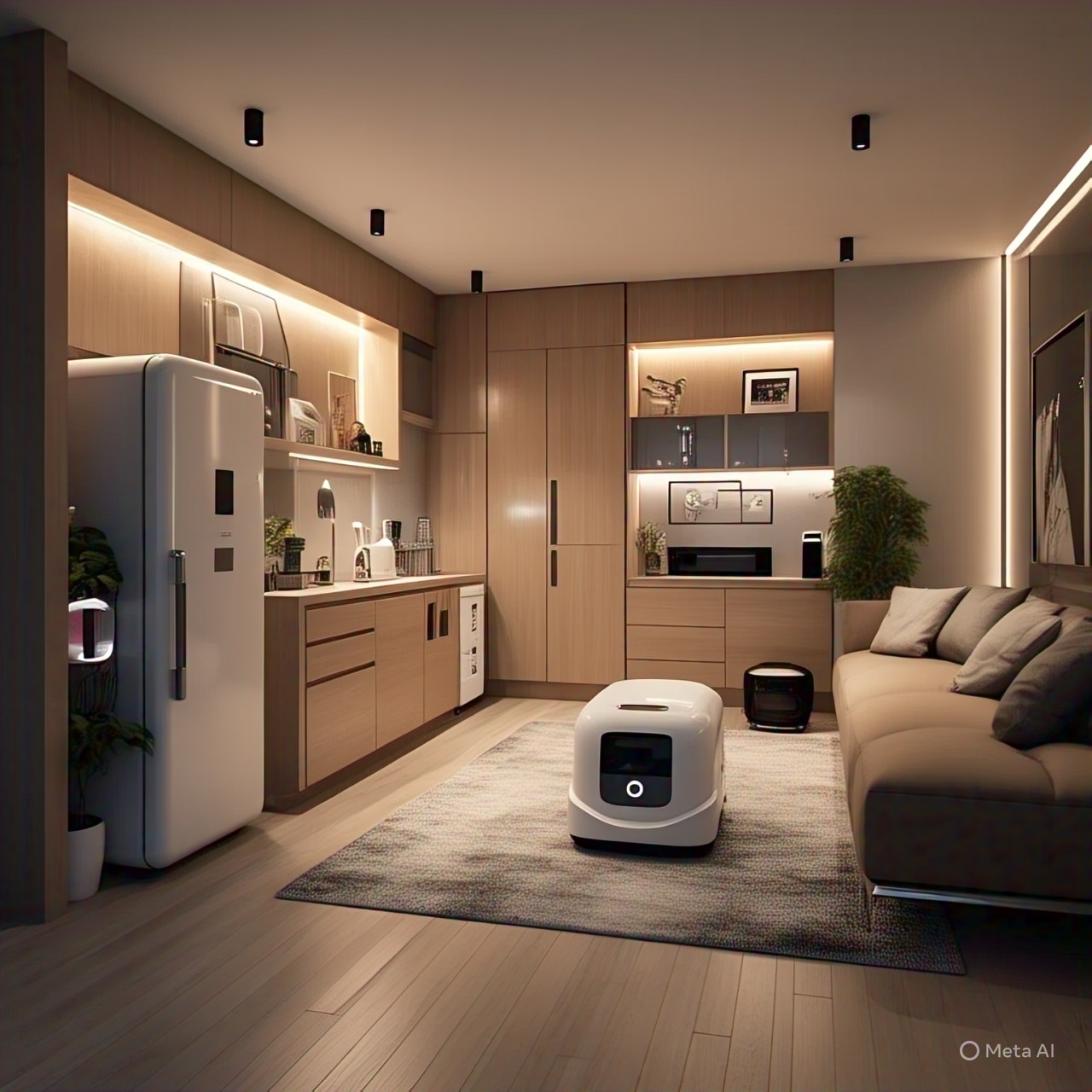If you want to build trustworthy and long-lasting devices for the ever-evolving IoT Hardware Design, you need to start with good hardware design.
This technique is crucial for ensuring connectivity, energy efficiency, security, and seamless integration.
This lesson will teach you what you need to know to become an expert in Internet of Things (IoT) hardware design. It’s perfect for hardware engineers, developers, and entrepreneurs.
🔧 What Is IoT Hardware Design?
The term “Internet of Things hardware design” describes the process of creating the physical components that enable devices to communicate, analyze, and transmit data inside an IoT network.
Included in this are the following:
-
Power units
-
Connecting modules
-
Sensor selection
-
Microcontroller selection
-
Circuit board design
The goal is for devices to be able to intelligently interact with one another and their environments.
🧩 Major Components of the Internet of Things
Central Processing Unit or Microcontroller
-
Coprocessor of the device.
-
STM32, Raspberry Pi, Arduino, and ESP32 are some of the most popular choices.
-
Consider the system’s compatibility, speed, and memory before making a decision.
Monitoring Devices
-
Notice changes in the surrounding environment, including changes in temperature, motion, humidity, and so on.
-
Some examples are infrared (IR) sensors, PIR (motion), and DHT22 (humidity).
Interconnection Modules
-
Make sure that cellular, Bluetooth, ZigBee, or Wi-Fi data transfer is enabled.
-
Smart homes benefit from Wi-Fi.
-
Mobile or faraway devices benefit greatly from cellular service.
Power Origin
-
Energy storage devices, solar cells, or electricity multipliers.
-
Efficient operation is crucial for long-term operations.
Circuit Board That Is Printed
-
Connects and stores all of the hardware.
-
Designed to be lightweight, long-lasting, and inexpensive.
🔋 Minimal Power Usage Considerations for the IoT Hardware Design
-
Battery-operated devices must have.
-
Employ power-saving CPUs and sleep modes.
📏 Compact Style
-
Aesthetics and portability are important for devices.
-
Crucial for wearables and embedded systems.
🌡️ Environmental Tolerance
-
Ideal for use in industrial settings due to resistance to dust, heat, and moisture.
🔗 Data Compatibility
-
The hardware has to be able to handle various communication protocols and applications.
🛡️ Internet of Things Hardware Security
-
Important hardware-based security measures must be put in place to prevent intrusions.
-
Secure boot, encrypted chips, and the Trusted Platform Module (TPM) should be used.
-
It is useful to have physical tamper detection in sensitive circumstances.
📡 Common IoT Communication Protocols
-
Message Queuing Telemetry Transport (MQTT): Superb for situations with limited bandwidth and very light.
-
Codified as COAP, the Restricted Application Protocol: Developed for use on low-powered cellphones.
-
Both HTTP and HTTPS: Common in electronics aimed for the general public.
-
It is important to consider the device’s processing power while choosing a protocol.
🛠️ Altium Designer: The Best Tool for IoT Hardware Design
-
Premium printed circuit board design software.
Other Tools:
-
KiCad: Widely used and freely available for use in modest to medium-sized projects.
-
Fritzing: Perfect for beginners to observe and recreate circuits.
-
Tinkercad: Ideal for experimental purposes and classroom use.
🧪 Verifying the IoT Hardware’s Functionality
-
Verify that all sensors and actuators are functioning as they should.
📶 Verifying Network Connection
-
Inspect the various parts, including the Bluetooth and Wi-Fi.
⚡ Evaluating the Potential
-
Minimize power loss while maximizing efficiency.
🌍 Experimentation in Natural Settings
-
Experiment with different levels of humidity and temperature.
💻 Harmonization of Computer Programs and Hardware
-
Before purchasing a microcontroller, be sure it can execute the software stack of your choice.
-
Upgrading the firmware should be feasible using OTA, or Over-the-Air.
-
Access to libraries and APIs is a requirement of the hardware.
🧪 Research and Production
-
Make limited runs using prototyping platforms such as Arduino or ESP.
-
To scale up production, switch to custom printed circuit boards.
-
Check if the product meets all certification standards (FCC, CE, RoHS).
🏥 Healthcare Industries Gain from Internet of Things Hardware Design
-
Devices for electronic tracking and smart apparel.
🌾 Producing Food
-
Smart watering systems and soil moisture monitors.
🏭 Producing
-
Robotics for manufacturing and preventative maintenance.
🚗 Shifting Positions
-
Watching a fleet of vehicles and determining their problems.

🔮 Trends in the Future of the Internet of Things
The Use of AI in Hardware Development
-
On-device AI processing for faster response.
Energy Harvesting
-
Converting mechanical or solar energy into electrical energy.
Adaptable Electronics
-
Sensory devices and bendable electronics for use on the go.
Computer Periphery
-
The latency of devices is reduced as their processing power increases.
📝 Guidelines for Developing Internet of Things Hardware
-
Clarifying the intended setting and use-case should be the first step.
-
Prioritize components based on their size, power, and performance.
-
Prepare ahead of time for massive production and scalability.
-
Do not forget about user safety and compliance.
🧠 Recommended Microcontrollers for IoT Applications
Exploring the Power Efficiency and Connectivity of Microcontrollers:
-
STM32: Splits out outstanding industrial IoT
-
ESP32: Wi-Fi and BT high home automation
-
Raspberry Pi: Moderate IoT prototyping
-
Arduino Uno: Ethernet/Wi-Fi on par
💸 Cost-Efficiency Balance
-
Despite their allure, cheap electronics are often unreliable.
-
Choose hardware that can handle upgrades in the future.
-
To cover component availability, testing, and certification costs, allocate funds accordingly.
📜 Compliance and Certification
-
For wireless communication in the US, it is necessary to have an IoT device certified by the FCC.
-
The European Union has a set of safety standards called CE.
-
Regulations pertaining to hazardous materials are outlined in RoHS.
-
Electrical equipment safety is UL rated.
🌱 Green Internet of Things Hardware Development
-
Choose materials that are safe for the environment and can be recycled.
-
The objectives of the design are to have a long lifespan with little maintenance.
-
Lessen your impact on the environment by enabling remote updates and fixes.
🔁 The Iterative Approach to IoT Hardware Design
-
Iterate better by incorporating feedback from early prototypes.
-
Document inefficiencies and mistakes for each iteration.
-
Use a version control system to store all design files and related documentation.
🔌 Modularity and Its Benefits
-
Modifications and upgrades are made easy using modular hardware designs.
-
Speeds up development while reducing downtime to a minimum.
🤝 Collaborating with Programmers and Designers
-
Work closely with programmers to ensure compatibility.
-
Involve UI/UX designers if your gadget has user interaction features.
-
In order to make cross-team collaboration go well, records should be kept up to date.
📚 Books and Other Educational Resources for Newcomers
-
“Creating Networked Products”
-
“Internet of Things: A Practical Perspective”
Courses Offered Online:
-
You may find top-notch Internet of Things (IoT) hardware courses on edX, Udemy, and Coursera.
Geographical Areas:
-
Sites like Hackster.io, Arduino, and the r/IOT subreddit on Reddit.
📌 Final Advice on Internet of Things Hardware Design
-
At its core, the design of each smart device is an Internet of Things (IoT) problem.
-
Scalability, security, and choosing the right components should be your top priorities.
-
Use reliable resources while you’re making and testing.
-
Consider the requirements for size, energy, and integration from the outset.
-
Make adjustments based on feedback from users and standards in the industry.
🧾 In Summary
In today’s linked and automated world, the capacity to design Internet of Things (IoT) hardware is becoming more crucial.
Hardware is the backbone of every project, whether it’s a smart thermostat, a wearable health tracker, or a sensor for a manufacturing facility.
By understanding basic ideas, making use of the right resources, and considering future trends, you may develop trustworthy and innovative IoT hardware design solutions that thrive in real-world contexts.




